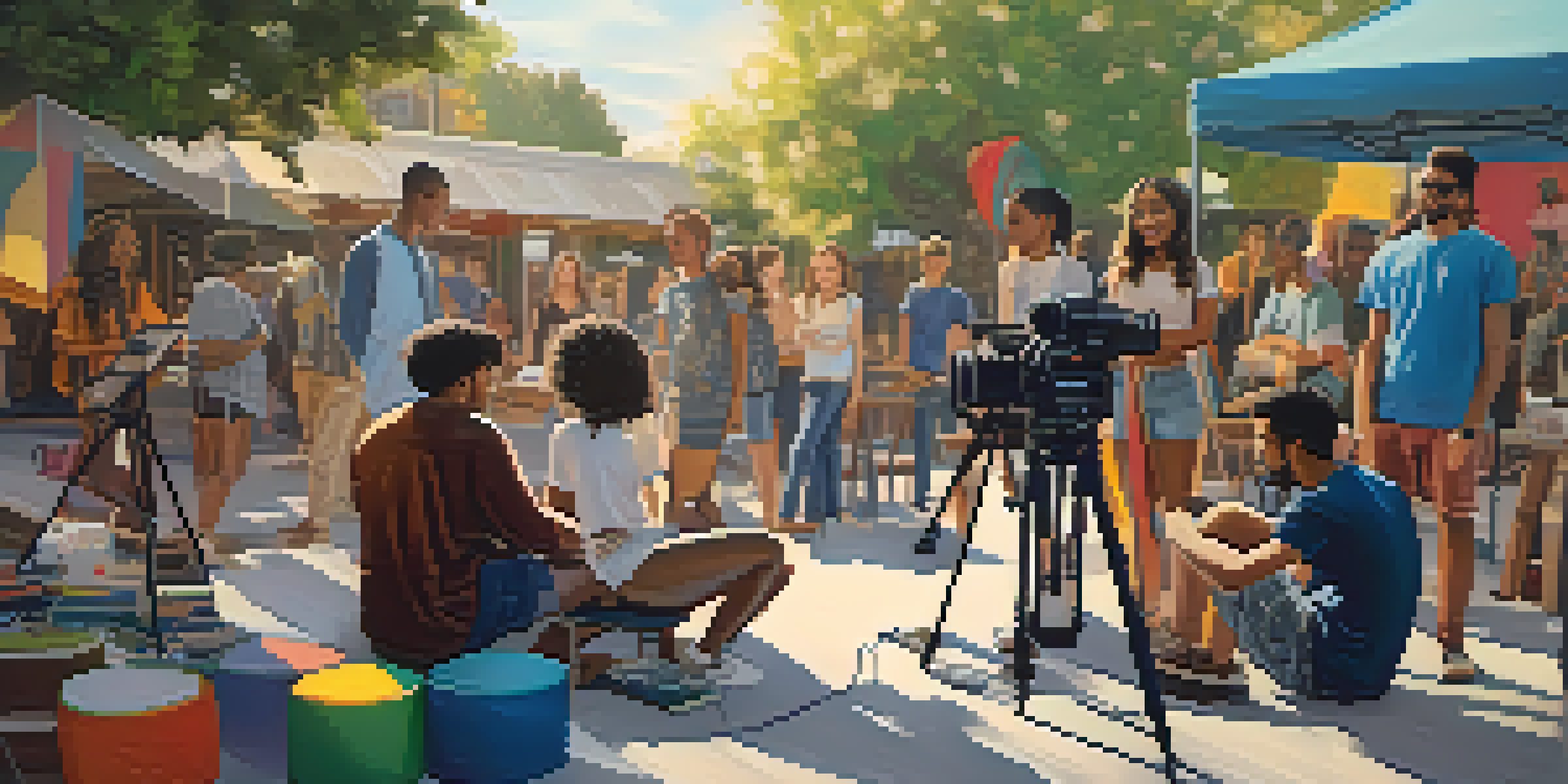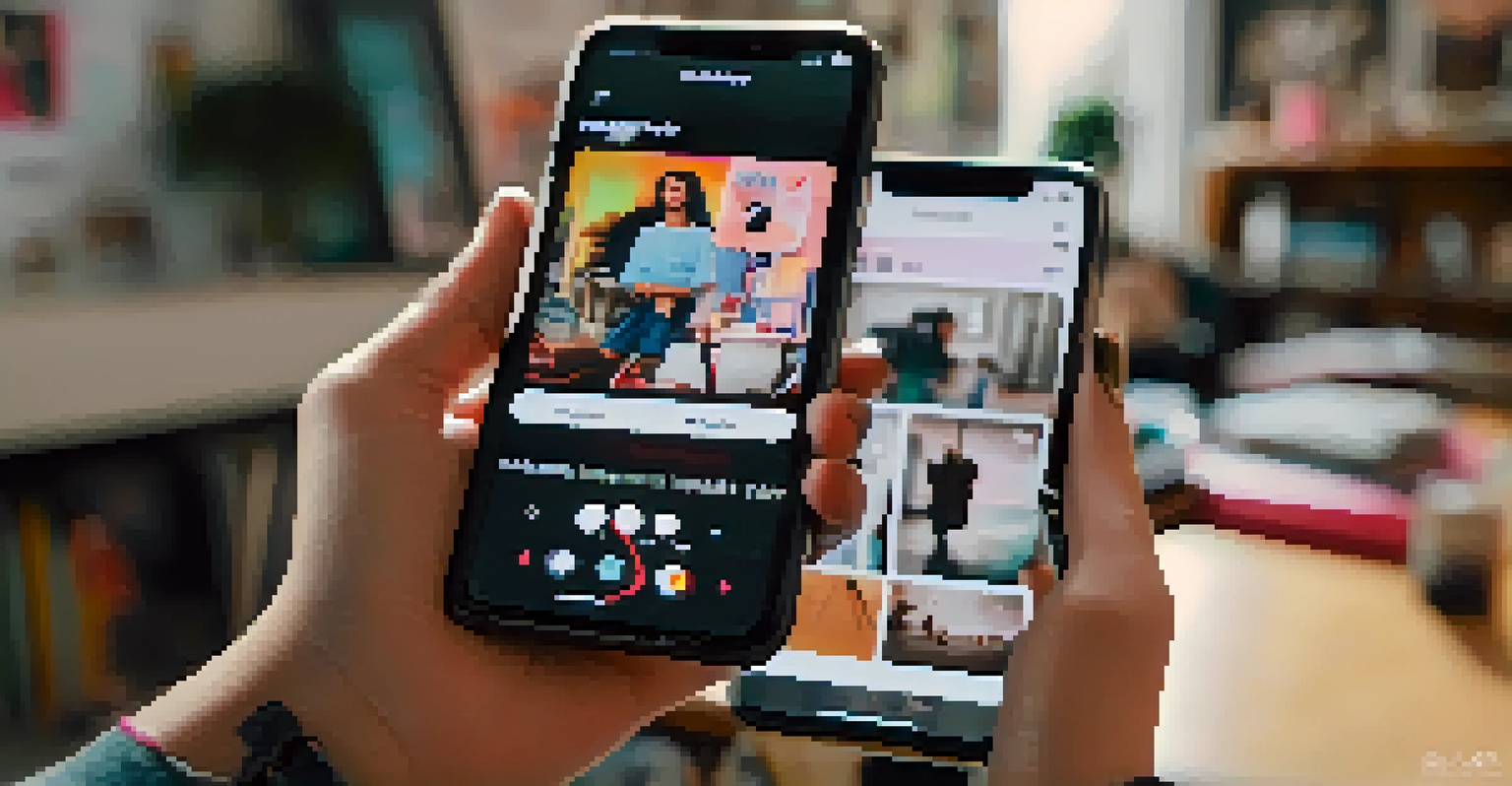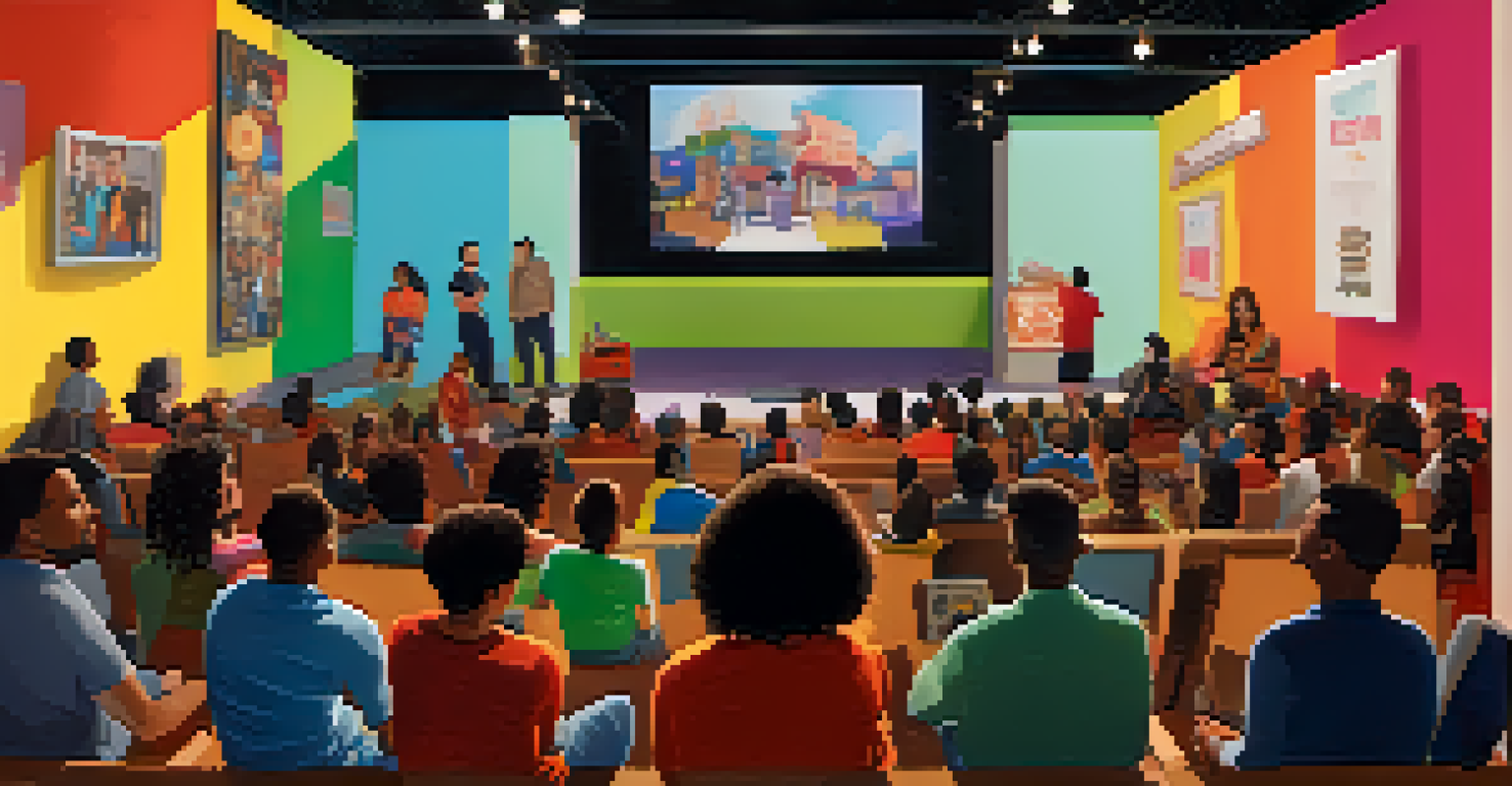The Role of Social Media in Shaping Youth Cinema Today

Understanding Youth Cinema in the Digital Age
Youth cinema has evolved dramatically in recent years, largely due to the pervasive influence of social media. Today's films aimed at younger audiences often reflect their unique experiences and challenges, making them relatable and engaging. This genre is not just about entertainment; it's a platform for youth to voice their opinions and narratives, often using social media as a launchpad for these ideas.
The stories we tell are a reflection of our experiences, and social media has become a powerful tool in amplifying those voices that might otherwise go unheard.
Social media platforms like TikTok, Instagram, and YouTube have become essential tools for filmmakers. They provide not only inspiration but also a direct line to their audience, allowing creators to gauge reactions and trends in real-time. As a result, youth cinema is increasingly characterized by a blend of traditional storytelling and modern digital aesthetics.
Moreover, the accessibility of filmmaking tools has democratized the process, enabling young creators to share their stories widely. This shift has led to a richer diversity of voices in youth cinema, fostering a more inclusive representation of different backgrounds and experiences.
The Role of Social Media in Film Promotion
Social media plays a crucial role in promoting youth films, often serving as the first point of contact between the film and its audience. Filmmakers leverage platforms like Twitter and Facebook to create buzz around their projects, sharing trailers, behind-the-scenes content, and engaging with fans. This strategy not only builds anticipation but also creates a sense of community among viewers.

Additionally, influencers have become pivotal in shaping the marketing landscape for youth cinema. When a popular figure shares a film or its content, it can reach a vast audience almost instantaneously. This trend highlights how social media can propel lesser-known films into the limelight, making them accessible to a broader demographic.
Youth Cinema Reflects Digital Culture
Today's youth films capture the unique experiences of younger audiences, blending traditional storytelling with modern digital aesthetics influenced by social media.
Ultimately, effective social media marketing can make or break a youth film's success. Filmmakers that harness these platforms effectively can significantly increase their visibility and impact, ensuring that their stories resonate with the intended audience.
Social Media as a Source of Inspiration for Filmmakers
Social media isn't just a promotional tool; it's also a rich source of inspiration for filmmakers. Platforms like TikTok, where trends can emerge overnight, often influence the themes and narratives explored in youth cinema. This constant flow of ideas encourages creators to innovate and adapt their storytelling methods to align with the interests of their audience.
In an age where attention spans are fleeting, the ability to tell a compelling story in a minute or less is not just an art; it's a necessity.
Furthermore, social media facilitates a unique form of collaboration among young filmmakers. They can easily connect with peers across the globe, exchanging ideas, scripts, and even participating in joint projects. This collaborative spirit fosters creativity and pushes the boundaries of traditional filmmaking.
As a result, contemporary youth cinema often reflects current social issues and cultural phenomena, making it more relevant than ever. Filmmakers who tap into these trends can create works that resonate deeply with their audience, ensuring the stories are both timely and impactful.
The Impact of Audience Feedback on Film Development
One of the most significant shifts in youth cinema today is the direct impact of audience feedback on the development of films. Social media allows viewers to share their thoughts and opinions instantaneously, which can influence everything from casting decisions to plot twists. Filmmakers are increasingly considering this feedback when crafting their narratives, blurring the lines between creator and audience.
This dynamic interaction can lead to more authentic storytelling, as filmmakers gain insights into what resonates with their viewers. For instance, if a particular character or storyline receives significant positive feedback, creators can choose to expand on that element in sequels or future projects. This responsiveness not only enhances viewer engagement but also fosters a sense of ownership among fans.
Social Media Drives Film Promotion
Platforms like TikTok and Instagram have become essential for promoting youth films, creating buzz and building community around projects.
However, this reliance on social media feedback can also pose challenges, as filmmakers might feel pressured to conform to audience expectations. Striking a balance between artistic vision and audience desires is essential for maintaining the integrity of the storytelling process.
Diversity and Representation in Youth Cinema
Social media has amplified voices that were traditionally marginalized in the film industry, leading to greater diversity and representation in youth cinema. With the rise of platforms that celebrate different cultures, identities, and stories, filmmakers are more empowered to tell narratives that reflect the experiences of a broader range of youth. This shift is vital, as it allows underrepresented groups to see themselves on screen.
Moreover, social media campaigns have played a significant role in advocating for diverse stories. Movements like #OscarsSoWhite have highlighted the need for more inclusive representation, prompting filmmakers to prioritize diversity in their projects. Consequently, audiences are now more aware and appreciative of films that authentically portray various cultures and experiences.
As a result, youth cinema is becoming a more inclusive space, encouraging empathy and understanding among viewers. This evolution not only enriches the film landscape but also empowers young audiences to embrace their identities and stories.
The Rise of Short-Form Content in Youth Cinema
The popularity of short-form content on social media platforms has influenced the structure of youth cinema significantly. With attention spans dwindling in the digital age, filmmakers are increasingly experimenting with shorter formats, leading to the rise of films that can be consumed in bite-sized pieces. This trend aligns well with the viewing habits of younger audiences who prefer quick, engaging content.
Platforms like TikTok have popularized the concept of storytelling in under a minute, inspiring filmmakers to create narratives that can captivate audiences rapidly. This shift has opened up new avenues for creativity, allowing filmmakers to explore unconventional storytelling methods and pacing. As a result, we see a blend of traditional cinematic techniques with the spontaneity of social media.
Diversity in Youth Cinema is Growing
Social media has amplified marginalized voices, leading to greater diversity and representation in youth cinema, which enriches storytelling and fosters empathy.
These shorter formats also allow for greater experimentation and flexibility, enabling filmmakers to take risks with their narratives. This new approach not only challenges the conventional film structure but also encourages a more diverse range of stories to emerge in youth cinema.
Challenges Faced by Filmmakers in the Social Media Era
Despite the benefits of social media in shaping youth cinema, filmmakers also face significant challenges in this new landscape. The pressure to be constantly engaged and relevant can lead to burnout, as creators navigate the demands of content creation alongside their filmmaking responsibilities. This can detract from the quality of their work and impact their creative process.
Additionally, the rapid pace of social media trends can create a sense of urgency that may compromise artistic integrity. Filmmakers might feel compelled to conform to fleeting trends rather than pursuing their unique vision, which can lead to formulaic storytelling. This challenge underscores the importance of maintaining originality amidst external pressures.

Moreover, the prevalence of online criticism can be daunting for emerging filmmakers. While feedback can be constructive, negative comments can deter creators from expressing themselves fully. Balancing the desire for audience approval with the need for authentic storytelling is a delicate dance that many filmmakers must navigate.